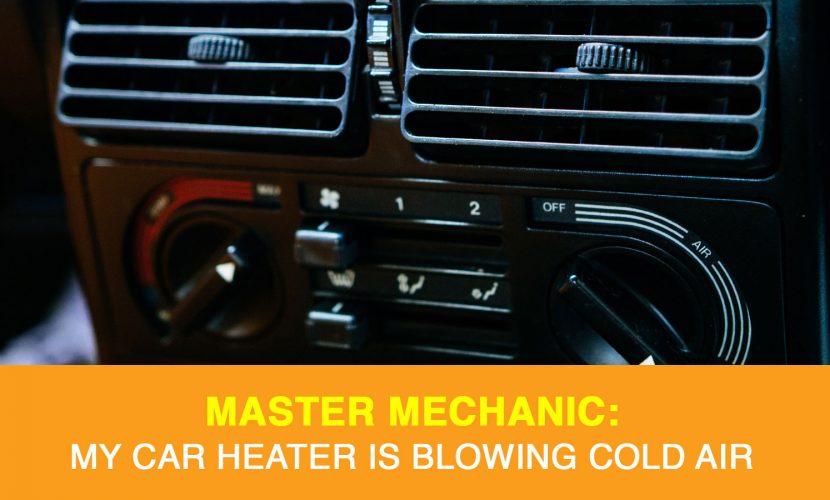
Ask A Master Mechanic: My Car Heater Is Blowing Cold Air
With winter months quickly approaching, the need for a functioning car heater is imperative. At Master Mechanic, as the temperature starts to cool, we get a lot of appointment requests about a faulty heater. That’s because many drivers put off the issue–or don’t notice it until it’s time to use the car heater. Either way, having your car heater suddenly blows out cold air instead of heat on a cold winter day isn’t something anybody wants. An unreliable car heater can make the cold winter months in Canada practically unbearable.
Like a home heating system, your car’s heating system has many different components working together to heat your vehicle. This means that like your home’s heating system, several things can stop working at any time.
We caught up with a Master Mechanic to discuss the most common causes of a faulty car heater. Let’s take a look at each potential issue in more.
Low Coolant
Your car uses coolant— which is usually comprised of 50% antifreeze and 50% water—to keep your engine cool. When you’re running the heat during the winter, some of the coolant is diverted from the engine to the heater core.
While it’s normal for your car to take time to warm the engine, and in turn warm up the coolant, it shouldn’t take more than a few minutes.
If cold air continues to blow after this, the first thing you should check is the coolant level. When your car is running low on coolant, it is unable to divert some to the heater core to create warm air. A simple top-up will do the trick here.
Issues with Your Heater Core
So, you checked the coolant levels, and your car is still blowing cool air into your cabin? You could have an issue with your heater core. What’s a heater core? Heater cores are cooling system parts that function like compact radiators. Typically situated directly behind your dashboard, a heater core is comprised up of brass or aluminum tubing and fans. Simply put, the tubing carries the hot coolant in and out, while the fans disperse the heat released by the coolant.
These signs are a good indicator that something could be wrong with your heater core, and that it’s time to contact a mechanic:
- Fog on your car’s windows
- A fruity, sweet-smelling odour
- Your car depleting coolant quickly
- An overheating engine
Console Buttons + Heater Control Valve
Although your car’s heating system is complex, sometimes the issue is something straightforward. Over time, the buttons on your car console can get stuck and stop working. If your coolant levels seem fine and there isn’t an issue with your heater core, it may be time to replace some of the control buttons.
Not all “buttons” are visible, and it could also be a problem with your heater control valve. The heater control valve is underneath the dash and acts as a switch that turns the heat on and off. If that piece is broken or stuck, your car will be stuck blowing cold air, too.
In either case, a quick trip to your local Master Mechanic can diagnose the issue.
Thermostat
Check your car’s thermostat. If the gauge remains on the “C” even after your engine has warmed up, you probably have a broken thermostat. If your thermostat isn’t sending a signal to the car that the engine is running warm, the coolant won’t be sent over. If coolant isn’t diverted to the heater core, the air will stay cool.
Don’t worry: thermostats are generally easy and inexpensive fix. An appointment at your local Master Mechanic can get your heater working again in no time.
A functioning heating system will make winter driving in Canada much more enjoyable. If you notice any of the issues listed above, or simply can’t get steady warm air blowing from your car vents, don’t hesitate to contact your local Master Mechanic. We’ll always explain exactly what the issue is—and what we need to do to fix it—before we complete a repair.

